Private First Class Samuel “Sam” Edward Dupris, Jr.
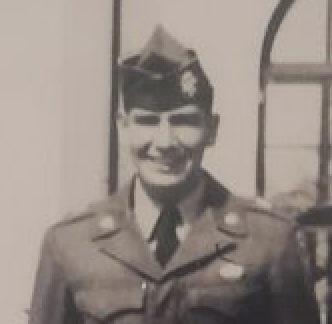
- Unit: 187th Airborne Regimental Combat Team
- Date of Birth: March 31, 1933
- Entered the Military: November 28, 1951
- Date of Death: October 23, 2022
- Hometown: Old Cheyenne Agency, South Dakota
- Place of Death: Eagle Butte, South Dakota
- Award(s): Purple Heart, Korean Service Medal with 1 Bronze Service Star, United Nations Service Medal, Combat Infantry Badge, Parachute Badge
- Cemetery: Section L, Site 310. Black Hills National Cemetery, Sturgis, South Dakota
Early Life
Samuel Edward Dupris, Jr., was born on March 31, 1933, at Cheyenne Agency Hospital on the Old Cheyenne Reservation in Dewey County, South Dakota. The fourth of five children born to Samuel Dupris, Sr., and Helen Traversie Dupris, Sam lived in a household with three sisters, Betty, Murial, and Penelope, and one brother, Robert.
Dupris’s birth coincided with the Great Depression, a difficult time for people nationwide that was even tougher for Native Americans, like the Dupris family, who were part of the Sioux tribe. His father, Sam Sr., was employed as a truck driver for the U.S. Government Federal Relief Program. This involved driving a truck to different areas on the reservation and often being away from his family overnight for work.
Sam attended school for three years at St. Joseph Catholic Indian Mission School in Chamberlain, South Dakota, and then attended the St. Francis Catholic Indian Mission School in Rosebud, South Dakota, for two years.
His last six years of education occurred at the Cheyenne Agency Boarding School in Eagle Butte, South Dakota. At school, students were forbidden from speaking the Lakota language. However, Sam Jr., nicknamed “Pinky,” often accompanied his father in his truck and stayed overnight with relatives, where he learned some of his native language. However, because he rarely had the opportunity to practice his language skills, he eventually lost his ability to speak his native language.

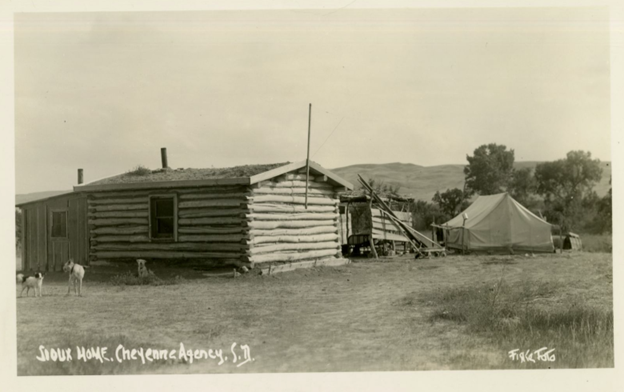
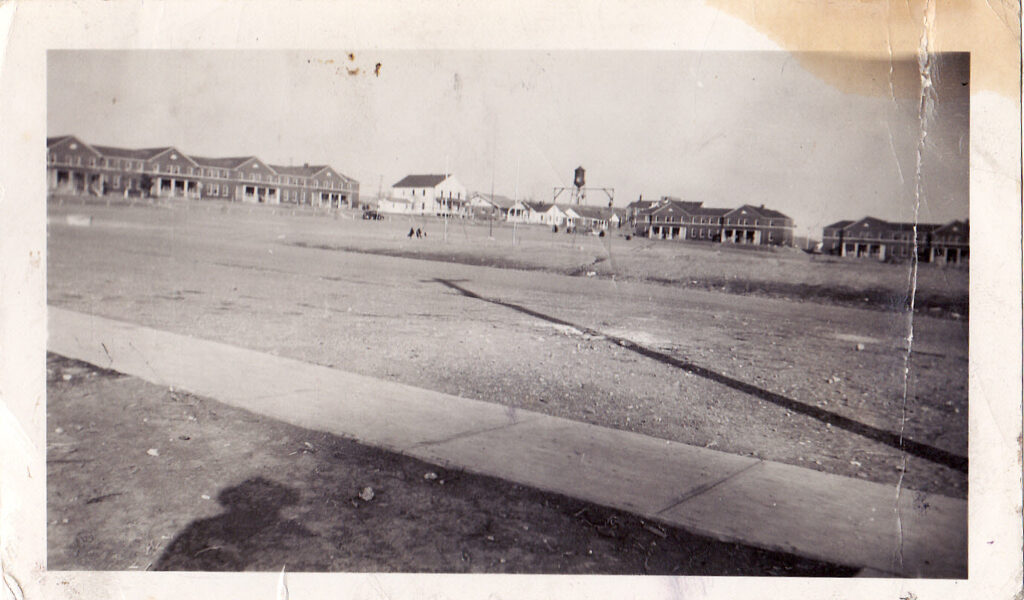
Homefront
During World War II and the Korean War, Native Americans displayed their loyalty proudly. Following the bombing of Pearl Harbor, which prompted U.S. entry into the war, they responded in unprecedented numbers to America’s call for volunteers. Because they acutely understood the need for the defense of one’s land, approximately 44,500 Native Americans eagerly stepped up to serve during World War II. This represented more than ten percent of the total Native American population. Most notably, the Navajo Code Talkers played an important role in World War II, as they transmitted an unbreakable code that proved vital to the success of Allied troops in the Pacific. However, Native Americans from other tribes nationwide also played a crucial role in “code talking,” which included some who grew up on the Old Cheyenne River Reservation.
Native American participation in the war effort extended beyond the military. During World War II, 40,000 Native American men and women left their reservations for defense industry jobs. Many also took personal responsibility to assist in the war effort, as they planted 36,200 Victory Gardens and purchased $50,000,000 in war bonds.
During the Korean War, about 29,700 Native Americans fought alongside their fellow Americans with honor. In fact, three Native Americans who served during the Korean War received the Medal of Honor, the highest award given to a member of the U.S. military for valor in action against an enemy force.
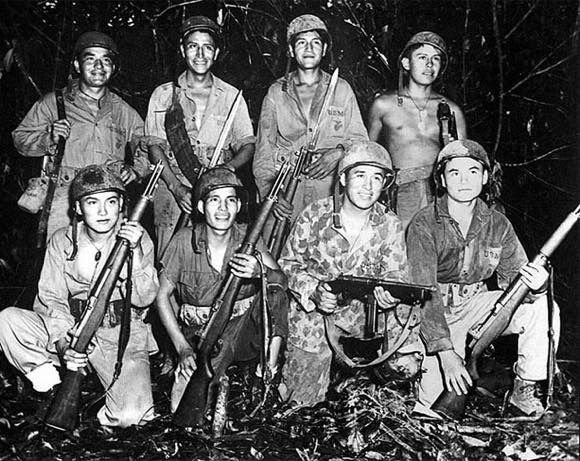
Military Experience
Upon graduation from high school, Dupris briefly worked as a Pump Truck Driver for Summit Construction Company in Rapid City, South Dakota, before he enlisted in the U.S. Army on November 28, 1951.
While there are few known specifics about his training and actual service duties, Dupris arrived in Korea in the summer of 1952 and served with the 187th Airborne Regimental Combat Team until he was wounded in August 1953.
During the Korean War, the 187th Airborne Regimental Combat Team suffered 2,115 casualties, including 442 killed in action. After being severely wounded in August 1953, Dupris spent a few months recovering at an Army hospital in Japan before he received an honorable discharge from active military service and a transfer into Army Reserve, along with a promotion to private first class, in October 1953.
Private First Class Dupris was awarded numerous medals for his courageous service, including a Purple Heart, Korean Service Medal with 1 Bronze Service Star, United Nations Service Medal, Combat Infantry Badge, and a Parachute Badge.
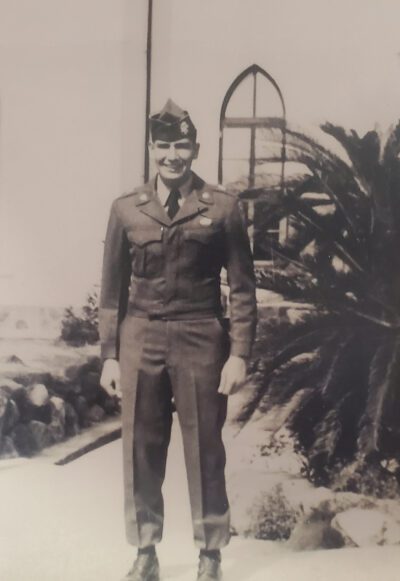
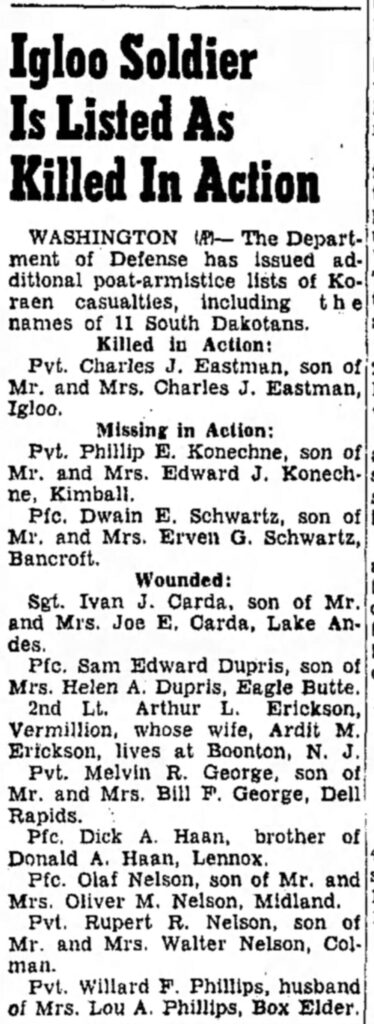
Veteran Experience
After his military discharge, Sam Dupris made the most of his opportunities by leveraging the GI Bill to attend Flight School in Fort Worth, Texas. However, upon graduation he quickly discovered it was difficult for Native American pilots to break into airline passenger aviation. As a result, he looked elsewhere for aviation employment and became a pilot in Arkansas and the Mississippi Delta, where he crop-dusted cotton fields. In 1959, Sam married Sammie Cheryl Fields. Shortly after, when he gained the opportunity to fly for Air America, where he performed covert CIA operations, which afforded the newlyweds three adventurous years in Southeast Asia.
Following this global journey, he and his wife returned to the U.S., where they had five children and settled into family life. At the same time, Dupris entered into a 25-year career with the Federal Aviation Administration (FAA) that took him around the world. His entry into the FAA also marked a breakthrough for Indigenous people as a whole, as Dupris was the first Native American pilot in the FAA and rose through the ranks to eventually become Operations Officer (Chief Pilot).
Dupris was a strong advocate for Native American employment, especially in the aviation field. He served on many national boards, spoke frequently at Native American Schools, and constantly encouraged Native American students to become aviators. Additionally, in the 1980s, his main assignment at the FAA Office of Aviation Education, was creating an “Indian in Aviation” program.
On May 1, 1994, after 27 years of service at the FAA, Sam Dupris retired from his civilian career. Although he lived away from the reservation far longer than he lived on it, he was extremely proud of his Native American heritage and home state of South Dakota. He loved to tell stories about his early years and time on the reservation.
For his prolific work on behalf of Native Americans, in 2001, the Cheyenne River Sioux Tribe proclaimed August 18 as “Sam Dupris Day,” and he was inducted into the Sioux Warrior Red Feather Society. In 2001, he was inducted into the South Dakota Aviation Hall of Fame, and later in 2010, he was inducted into the South Dakota Hall of Fame. Thus, his accomplishments were many, and his impact was great.
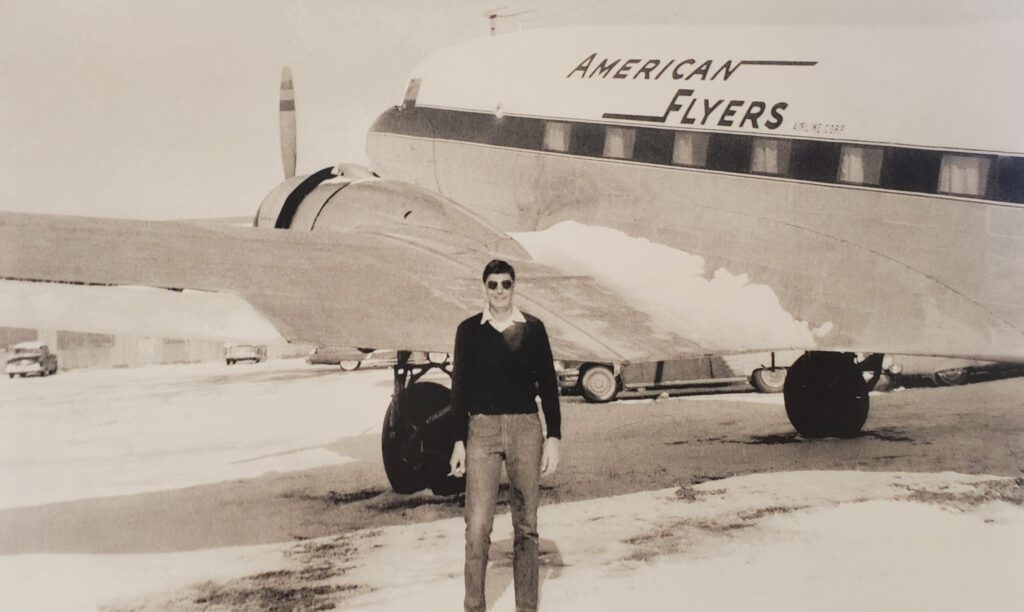
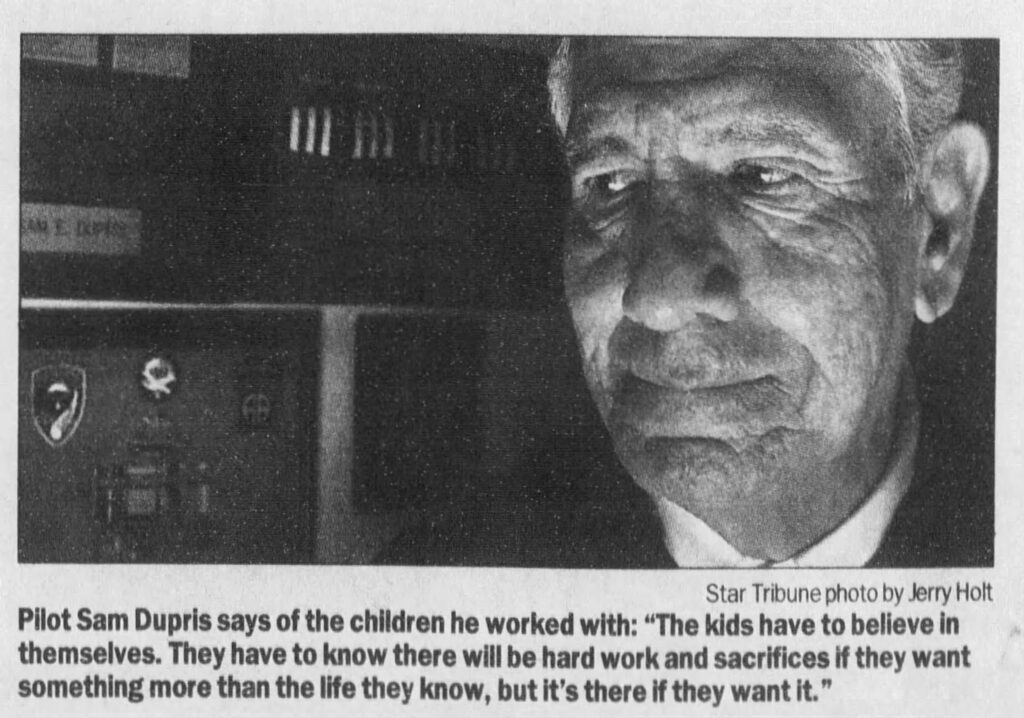
Commemoration
On October 23, 2022, at the age of 89, Sam Dupris peacefully passed away, surrounded by family in Eagle Butte, South Dakota, only three weeks after the death of his wife Sammie. He was buried with full military honors at Black Hills National Cemetery in Sturgis, South Dakota.
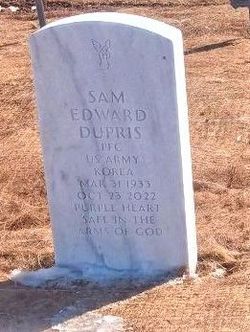
Bibliography
Primary Sources
Historic Photo of the Old Cheyenne Agency. Photograph. c. 1940s. Native Sun News Today [Rapid City, SD], September 9, 2024. https://www.nativesunnews.today/articles/the-old-cheyenne-agency/.
“Igloo Soldier is Listed as Killed in Action.” The Daily Republic [Mitchell, SD], August 10, 1953. Newspapers.com (8363341).
Native American House, Cheyenne Agency SD. Postcard. South Dakota State Historical Society (2014-10-08-336). https://sddigitalarchives.contentdm.oclc.org/digital/collection/photos/id/52925/rec/2.
Sam Dupris. South Dakota, U.S., Marriages, 1905-2018. Digital Images. http://ancestryclasroom.com.
Sam Edward Durpis. DD-214, Department of the Army. National Archives and Records Administration – St. Louis.
Sam Edward Durpis. Honorable Discharge Certificate, Department of the Army. National Archives and Records Administration – St. Louis.
Sam Edward Dupris. U.S., Indian Census Rolls, 1885-1940. http://ancestryclasroom.com.
South Dakota. Dewey County. 1940 U.S. Census. Digital images. http://ancestryclasroom.com.
Secondary Sources
Carbonneau, Laura Schoen. South Dakota Korean War Memorial Book of Heroes: Biographies, Photographs and Stories of those who Served between 1950-1955. State Publishing, 2004.
Gilbertson, Brian J. “The Native American Warriors in the U.S. Military.” Native America Today. Accessed April 2, 2025. https://nativeamericatoday.com/the-native-american-warriors-in-the-u-s-military/.
Govaerts, Lotte. “Oahe Dam Impacts: Cheyenne River Reservation.” Rogers Archaeology Lab, National Museum of Natural History. Accessed April 2, 2025. https://nmnh.typepad.com/rogers_archaeology_lab/2024/03/oahe-dam-impacts-cheyenne-river-reservation.html.
Haga, Chuck. “In Each World He Encounters, ‘Flying Soldier’ Finds His Place.” Minneapolis Star-Tribune [Minneapolis, MN], December 25, 2001. Newspapers.com (195678376).
“His Fight for Native Aviators.” Native Sun News Today [Rapid City, South Dakota], September 23, 2021. https://www.nativesunnews.today/articles/his-fight-for-native-aviators/.
Kessler, Jill. “Pilot and CRST Member Sam Dupris Aims to Give Back by Helping Aviation Dreamers Take Flight.” West River Eagle [Eagle Butte, SD], May 3, 2018. https://www.westrivereagle.com/articles/pilot-and-crst-member-sam-dupris-aims-to-give-back-by-helping-aviation-dreamers-take-flight/.
“Legacy Sam ‘Pinky’ E. Dupris.” South Dakota Hall of Fame. Accessed November 11, 2024. https://sdexcellence.org/Sam_Dupris_2010.
“Obituary for Sam Dupris.” Fidler-Isburg Funeral Chapels. Accessed April 3, 2025. https://www.fidler-isburgfuneralchapels.com/obituary/sam-dupris.
“Sam Edward Dupris.” Find A Grave. Updated October 28, 2022. Accessed April 2, 2025. https://www.findagrave.com/memorial/245112999/sam-edward-dupris.
“Sam Edward Dupris.” National Cemetery Administration. Accessed November 11, 2024. https://gravelocator.cem.va.gov/ngl/result#results-content.
“Sam Edward Dupris.” Veterans Legacy Memorial, U.S. Department of Veterans Affairs. Accessed April 8, 2025. https://www.vlm.cem.va.gov/SAMEDWARDDUPRIS/a1d0e5.
“Sammi Cheryl Dupris.” Find A Grave. Updated October 6, 2022. Accessed April 2, 2025. https://www.findagrave.com/memorial/244197758/sammi_cheryl-dupris.
This profile was funded by a grant from the United States Department of Veterans Affairs. The opinions, findings, and conclusions stated herein are those of the author and do not necessarily reflect those of the United States Department of Veterans Affairs.

